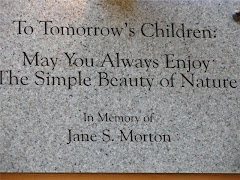Note: Scroll down right margin to CODE "(A-52) SUBURBAN BIRDS" for free videos and free article on this topic.
I was taken by this research because I live in a suburban "MT" area with large trees and old houses.The article demonstrates how important it is for people to transform parts of their lawns into wildlife-friendly spaces. Let me explain!
Researchers compared breeding bird prevalence in three different suburban environs. The first was a 70-year-old area of large houses along streets shaded by mature trees (MT), primarily oaks and elm (describes my neighborhood). The second suburban environment was a 15-year-old area built upon open agricultural land with young maple street trees (YT), and the third area was a 15-year-old area on which houses were built in small clearings within a second-growth oak-pine woodland (OP). Bird censuses were taken in each of the three suburban environs yearly for 5 years. The results showed that the YT supported the lowest total avian density of the three suburbs; OP supported the greatest variety and total density of insectivores and the lowest number of ground-gleaning omnivores; and MT supported the highest total avian density, comprised primarily of ground-foraging seed eaters and omnivores.
 |
| Click to learn more |
I enjoy walking around the block in my old, MT neighborhood, toting binoculars. The spring migration of warblers is astounding as they flitter high in the aging oak, maple, locust, sycamore, and ash trees. This suburban forest canopy has dead limbs and cavities that attract Red-bellied woodpeckers and even Wood ducks. In fact, it's a yearly tradition to gather up the poor Wood duck babies as they jump from a cavity 70 feet up in a aging oak tree in our neighbor's yard. Unfortunately, the neighborhood cats would get them if we didn't. The mother Wood duck is ferociously brave, and we trap her, too, in fishing nets. Moma and her brood are released several miles away in the Muddy Creek, a tributary of the Sandusky River.
Most of the old, victorian houses in the neighborhood have "old growth" shrubs planted years ago. We do have Goldfinches, House finches, catbirds, robins, Carolina wrens, and Ruby-throated hummingbirds that nest in them.
Most of the old, victorian houses in the neighborhood have "old growth" shrubs planted years ago. We do have Goldfinches, House finches, catbirds, robins, Carolina wrens, and Ruby-throated hummingbirds that nest in them.
Related Posts:
Create Wildlife-Friendly Spaces In Your Lawn God Speaks About Wildlife-Friendly Yards!
Urban Landscaping For Wildlife With Native Plants
Create A Wildlife-Friendly Yard!
Robert Morton, M.Ed., Ed.S. encourages others to transform part of their lawns into wildlife-friendly spaces. Please join the movement by contacting us at the secure Bpath Mail Form. Have a wildlife-friendly space in your yard! We'd enjoy featuring it on this site free-of-charge, for the good of the order! Any relevant meetings or events you'd like to post free-of-charge? Contact us on the Bpath Mail Form.
